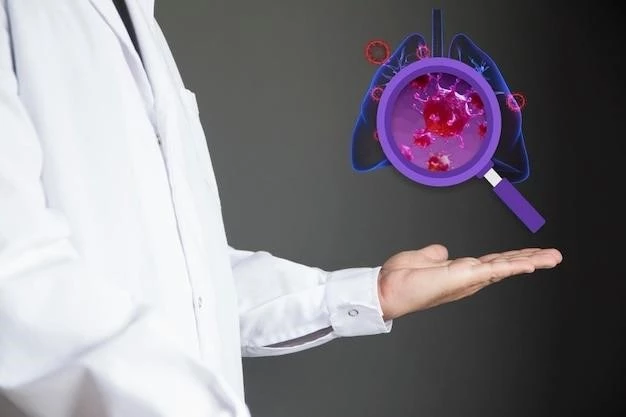Introduction to Testes Neoplasm
Testicular cancer is a common malignancy in men aged 15 to 45 years, representing one of the most curable cancers with prompt identification.
Testicular cancer is a significant health concern among men aged 15 to 45, affecting the testicles, a vital part of the male reproductive system; Symptoms may include lumps, pain, or swelling in the scrotum. It is crucial to recognize early signs and seek prompt medical attention for proper diagnosis and treatment.
Overview of Testicular Cancer
Testicular cancer is a significant health concern among men aged 15 to 45٫ affecting the testicles٫ a vital part of the male reproductive system. Early detection is crucial for successful treatment.
Cryptorchidism and Other Risk Factors
Certain risk factors, such as cryptorchidism (undescended testicle), family history of the disease, and infertility, can increase the likelihood of developing testicular cancer. Understanding and addressing these risk factors is crucial for prevention and early detection.
Types of Testicular Neoplasms
Testicular neoplasms mainly consist of germ cell tumors, which account for more than 90 of all testicular cancers, with seminomas and nonseminomatous germ cell tumors being the primary subtypes.
Germ Cell Tumors
Germ cell tumors account for over 95% of all testicular cancers and are categorized into seminomas and nonseminomatous germ cell tumors, each requiring tailored treatment approaches for optimal outcomes.
Stromal Tumors
Stromal tumors of the testicles are often benign and generally not linked to habits or lifestyles. While rare, it is crucial to be aware of the risk factors such as an undescended testicle for early detection and appropriate management.
Symptoms and Signs
Testicular cancer may present with symptoms like painless lumps, swelling in the testicle, or discomfort in the scrotum. Early detection is key for effective treatment.
Common Symptoms of Testicular Cancer
Testicular cancer often manifests with painless lumps, testicular swelling, or scrotal discomfort. Promptly addressing these symptoms through medical evaluation is crucial for timely diagnosis and effective management.
Diagnosis and Early Detection
Timely medical evaluation is crucial if you notice symptoms like testicular lumps, swelling, or scrotal discomfort. Early detection improves treatment outcomes.
Diagnostic Procedures for Testes Neoplasm
Diagnostic procedures for testicular neoplasms often involve ultrasound imaging for initial detection, followed by computed tomography (CT) or magnetic resonance imaging (MRI) for staging. Timely and accurate diagnostics play a crucial role in determining the appropriate treatment approach.
Treatment Options
Effective treatment for testicular cancer often involves multimodal approaches, including surgery, chemotherapy, and radiation therapy. Prompt diagnosis and tailored treatment plans are crucial for successful outcomes.
Multimodal Approaches to Testicular Cancer
Testicular cancer treatment typically involves a combination of surgery, chemotherapy, and radiation therapy to target the tumor effectively and improve long-term outcomes. Individualized treatment plans are vital for successful management.
Surgical Intervention
When testicular neoplasms are detected, surgical intervention often plays a crucial role in removing tumors and preventing the spread of cancer. Consult with a healthcare professional for appropriate surgical options.
Role of Surgery in Treating Testicular Tumors
Surgery plays a vital role in the treatment of testicular tumors by removing the affected testicle or masses, aiding in the prevention of cancer spread. Consult with a healthcare professional to discuss surgical options tailored to your specific condition.

Chemotherapy and Radiation Therapy
Chemotherapy and radiation therapy are commonly used in the treatment of testicular cancer, often in combination with surgery. Discuss with your healthcare provider the effectiveness of these treatments for your specific condition.
Effectiveness of Chemotherapy in Testes Neoplasms
Chemotherapy is highly effective in treating testicular neoplasms, particularly germ cell tumors. It is often used in conjunction with other treatments for optimal outcomes. Consult with your healthcare provider to discuss the suitability of chemotherapy for your specific condition.
Prognosis and Survival Rates
Understanding the factors that influence the prognosis of testicular cancer is vital for patients and healthcare providers to tailor effective treatment plans. Early detection and timely intervention play a significant role in improving survival rates.
Factors Affecting the Prognosis of Testicular Cancer
Several factors can influence the prognosis of testicular cancer, including the stage at diagnosis, type of tumor, response to treatment, and overall health. Understanding these factors can help guide treatment decisions and optimize outcomes for individuals with testicular cancer.

Endocrine Aspects of Testicular Neoplasms
Testicular neoplasms can impact hormonal functions and may require careful management to address potential endocrine-related effects. Consult with a specialist to understand and address these aspects of the condition.
Impact on Hormonal Functions
Testicular neoplasms can affect hormonal functions, potentially leading to endocrine-related manifestations that require careful management. Consult with a healthcare provider specializing in endocrinology to address any hormonal issues associated with testicular cancer.
Prevention and Risk Reduction
Reducing the risk of testicular cancer involves understanding potential risk factors such as cryptorchidism, family history, and other predisposing conditions. Regular self-examinations and prompt medical evaluation are essential for early detection and effective management.
Strategies to Lower the Risk of Testicular Cancer
Reducing the risk of testicular cancer involves strategies such as regular self-examinations, understanding family history, addressing underlying health conditions, and adopting a healthy lifestyle. Consult with healthcare professionals to discuss personalized risk reduction measures and early detection strategies.
Current Research and Innovations
O field of testicular cancer research continues to advance, exploring new treatment modalities and innovative approaches to enhance patient outcomes. Staying updated on the latest research can provide valuable insights into the evolving landscape of testicular neoplasms.
Advancements in Testicular Cancer Research
O field of testicular cancer research continues to advance with a focus on innovative treatment modalities and personalized approaches to provide more effective and targeted care for individuals with testicular neoplasms. Staying informed about the latest research developments can offer valuable insights into improving outcomes and quality of life for those affected by testicular cancer.
Conclusion
In conclusion, testicular cancer remains a significant health concern among men, but early detection and advancements in treatment offer hope for improved outcomes. Stay proactive, understand risk factors, and seek timely medical care for optimal management of testicular neoplasms.
